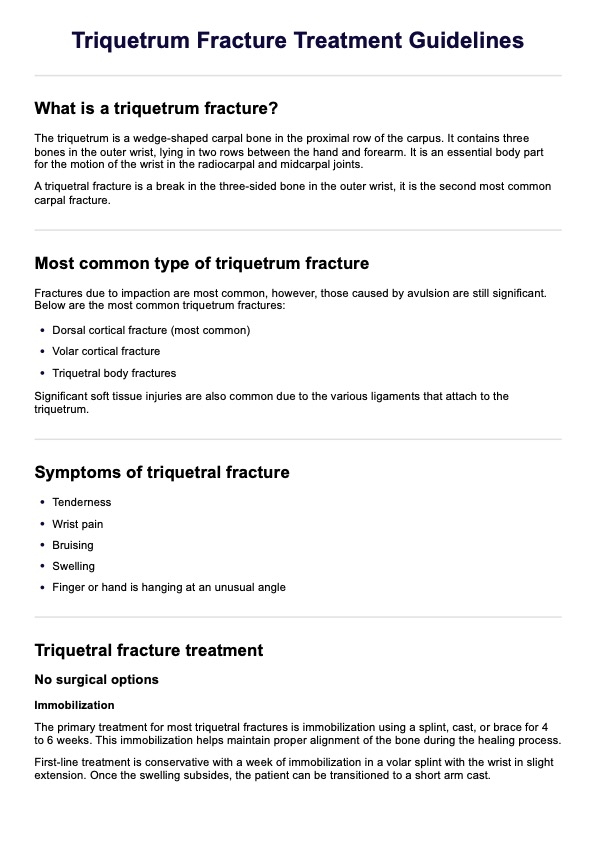A triquetrum fracture is a break in the triquetrum, one of the eight small carpal bones on the ulnar side of the wrist near the pinky finger. As one of the most common carpal fractures, it typically occurs due to a fall on an outstretched hand, direct trauma, or repetitive stress. There are three main types of triquetrum fractures: dorsal cortical fractures, which are the most common and involve a break on the dorsal surface of the bone; body fractures, which affect the main portion of the triquetrum and are often associated with high-impact trauma; and volar cortical fractures, which are less common and occur on the volar (palmar) side of the bone, often linked to ligamentous injury or extreme wrist extension.

Triquetrum Fracture Treatment Guidelines
Click here to learn more about a triquetrum fracture. Download a free Triquetrum Fracture Treatment Guidelines for better patient education.
Triquetrum Fracture Treatment Guidelines Template
Commonly asked questions
A diagnosis is typically made through a physical examination to assess pain and range of motion. Imaging studies, such as X-rays, CT scans, or MRIs, are also done to confirm the fracture and check for associated injuries.
Triquetrum fractures are typically treated with immobilization using a splint or cast to allow the bone to heal. Most cases resolve without complications, but severe or displaced fractures may require surgical intervention. Surgery may involve fixation techniques such as pins or screws to restore stability and alignment.
EHR and practice management software
Get started for free
*No credit card required
Free
$0/usd
Unlimited clients
Telehealth
1GB of storage
Client portal text
Automated billing and online payments










